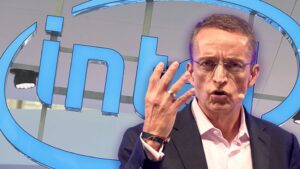ButSpeak.com
News which Matters.

Intel announces layoffs affecting over 15% of its workforce, aiming to cut $20 billion in expenses amidst disappointing Q2 performance and AI product challenges.
Intel announced on Thursday that it will reduce its workforce by more than 15%, aiming to streamline operations and cut $20 billion in expenses this year. This move comes in response to a challenging second quarter where the company reported a $1.6 billion loss.
Intel’s CEO, Pat Gelsinger, acknowledged the disappointing financial performance, citing difficulties in the latter half of the year. “Our Q2 financial performance was disappointing, even as we hit key product and process technology milestones,” Gelsinger stated in an earnings release. He indicated that trends for the second half of the year were proving more challenging than initially anticipated.
Chief Financial Officer David Zinsner elaborated on the factors affecting the company’s performance, pointing to the “headwinds” in the ramp-up of Intel’s artificial intelligence PC product and underutilized capacity at its facilities. Zinsner emphasized the necessity of spending reductions, saying, “By implementing our spending reductions, we are taking proactive steps to improve our profits and strengthen our balance sheet.”
With Intel’s workforce totaling 124,800 employees at the end of last year, the announced layoffs could affect about 18,000 positions. This drastic reduction is part of Intel’s broader efforts to tighten its belt amidst a difficult economic landscape and fierce competition from rivals like Nvidia, AMD, and Qualcomm.
In June, Intel had already paused the expansion of a major factory project in Israel, which was expected to involve an additional $15 billion investment. The company cited the need to adapt to changing timelines and market dynamics, asserting that decisions were made based on business conditions and responsible capital management.
This wave of cost-cutting measures follows Intel’s bold assertions just a month ago, where it positioned itself as a leader poised to drive the artificial intelligence revolution despite the formidable challenges from competitors. However, the current economic climate and internal struggles have necessitated a significant recalibration of the company’s strategy.